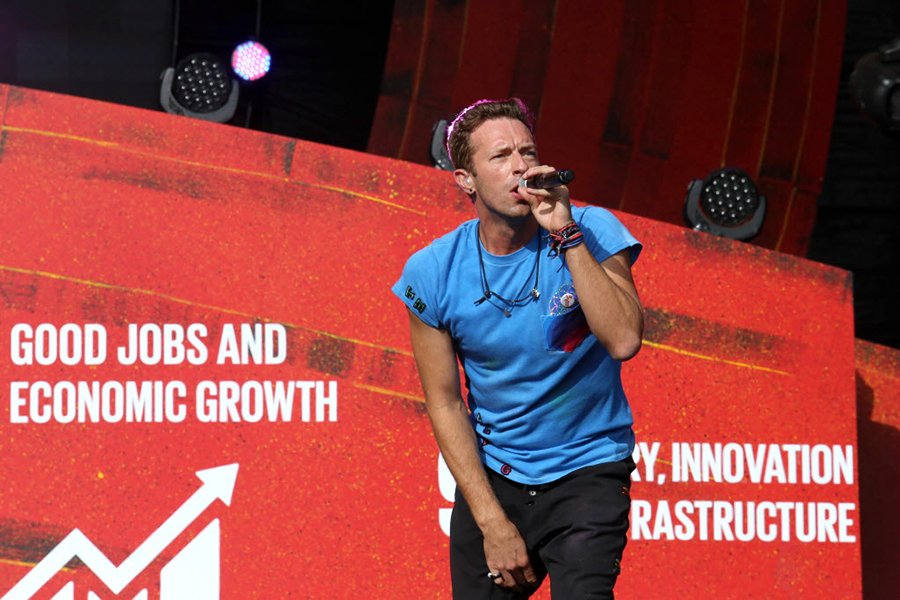Super Bowl 50: How the halftime show became one of the biggest events in the entertainment business
Loading...
Warren Duncan has something in common with Madonna, Beyonce, Mick Jagger, Bruce Springsteen, and Prince – and doesn't hesitate to let his grandchildren know about it every year about this time.
All performed at the Super Bowl halftime show, although it wasn't quite the spectacle in Duncan's time that it is now. He was at snare drum for the Florida A&M University marching band at Super Bowl III in 1969, when the New York Jets upset the Baltimore Colts.
"I really hated to see it transition to what it is," Duncan said. "I really wish it would be like the traditional band halftime show."
Those days have gone the way of leather helmets. The halftime show has become one of the year's top cultural moments, so anticipated that it is commonly seen by more people than the game itself. The British band Coldplay steps into the spotlight this weekend, with an expected cameo by Beyonce.
The Super Bowl show can easily be divided into two eras: Before Michael Jackson and after. His 1993 performance established halftime as something more than an afterthought. With the fireworks and extras, Jackson proved no gesture could be too big.
The NFL begins planning its halftime show months in advance, negotiating with chosen artists and mapping out how things will proceed, said Mark Quenzel, NFL senior vice president in charge of the halftime show. Following Janet Jackson's incident in 2004, the league has maintained strict control.
"In some ways, it is the worst 12 and a half minutes of my year," said Quenzel.
By the time Katy Perry rode in on a mechanical lion last year, and soared away on a platform designed to look like a shooting star, she had rehearsed the show some 40 times. "Anyone who has ever done it has been scared," she told Elle magazine later. "You stay off the Internet for five days afterward."
Today, it's almost impossible to conceive that the second Super Bowl featured Miami-area high school bands at halftime. Florida A&M's band performed in 1971, after Duncan graduated, and backed Prince in 2007. The University of Michigan and Grambling State University bands performed twice.
Duncan can barely recall what his band played that day; a James Brown tribute sticks in his mind. He better remembers hanging with his friends on a Miami street at 3 a.m. when Jets quarterback Joe Namath rode by in a car filled with women, holding out his index finger in a promise of a victory he later delivered.
The lineup for the 1980 halftime show – a salute to the Big Band Era with the youthful singing group Up With People – practically screams at anyone under age 50 to find something else to do.
Up With People was such a regular part of Super Bowl halftime that Tim Lane participated in four of them: singing "Philadelphia Freedom" for the 1976 Bicentennial-themed show, in the chorus for the Big Band tribute, operating a spotlight for 1982's salute to Motown, and picking participants for the 1986 show.
The youth education organization still exists, and celebrated its own 50th anniversary last year. Lane is its vice president of alumni engagement.
"We love the fact that we did it as often as we did," he said. "We don't know if we ever will again."
It finally dawned on the NFL in the 1990s that halftime was a massive missed opportunity.
For artists, it is a chance to perform before an audience whose size cannot be duplicated. "It has become kind of a bucket list item for even the biggest acts in the world," Quenzel said.
Following Janet Jackson's performance, the NFL ushered in an era of big rock acts like The Who, Paul McCartney, Bruce Springsteen, and Tom Petty. McQuenzel has sought to make the bookings more current. One of his proudest moments was hiring Bruno Mars in 2014 despite fears the singer wasn't well known enough, but the show turned out well.
He encourages acts to invite special guests; Perry brought along Lenny Kravitz and Missy Elliott.
Artistic statements are fine, but Quenzel's goal is strictly mercenary: to move from the end of the first half to the beginning of the second without anyone tuning out.
"We don't micro-manage the artists," he said. "We try not to. They understand our goals and we understand their goals. We respect what they do, and I think they respect the fact that we know our audience."
He won't talk about a wish list of future performers. It doesn't take a long look at the charts to figure out two of the biggest music stars who haven't stepped out on a halftime stage, though.
Adele? Taylor Swift? Are you listening?





